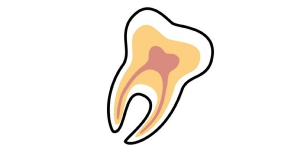 It is amazing what can be determined from ancient teeth! Thanks for visiting Advanced Endodontics of Lakewood, OH.
It is amazing what can be determined from ancient teeth! Thanks for visiting Advanced Endodontics of Lakewood, OH.
An international team of researchers has found new evidence that our prehistoric ancestors had a detailed understanding of plants long before the development of agriculture.
By extracting chemical compounds and microfossils from dental calculus (calcified dental plaque) from ancient teeth, the researchers were able to provide an entirely new perspective on our ancestors’ diets. Their research suggests that purple nut sedge (Cyperus rotundus) — today regarded as a nuisance weed — formed an important part of the prehistoric diet.
Crucially, the research, published in PLOS ONE and led by the Universitat Autònoma de Barcelona and the University of York, suggests that prehistoric people living in Central Sudan may have understood both the nutritional and medicinal qualities of this and other plants.
The research was carried out at Al Khiday, a pre-historic site on the White Nile in Central Sudan. It demonstrates that for at least 7,000 years, beginning before the development of agriculture and continuing after agricultural plants were also available the people of Al Khiday ate the plant purple nut sedge. The plant is a good source of carbohydrates and has many useful medicinal and aromatic qualities.
Lead author Karen Hardy, a Catalan Institute for Research and Advanced Studies (ICREA) Research Professor at the Universitat Autònoma de Barcelona (UAB) and an Honorary Research Associate at the University of York, said: “Purple nut sedge is today considered to be a scourge in tropical and sub-tropical regions and has been called the world’s most expensive weed due to the difficulties and high costs of eradication from agricultural areas. By extracting material from samples of ancient dental calculus we have found that rather than being a nuisance in the past, its value as a food, and possibly its abundant medicinal qualities were known. More recently, it was also used by the ancient Egyptians as perfume and as medicine.
“We also discovered that these people ate several other plants and we found traces of smoke, evidence for cooking, and for chewing plant fibres to prepare raw materials. These small biographical details add to the growing evidence that prehistoric people had a detailed understanding of plants long before the development of agriculture.”
Continue reading HERE.


